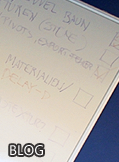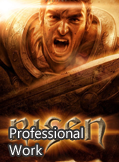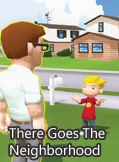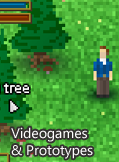 |
| the guard units |
In HEIST two players were competing against each other. One is a thief trying to steal something from a specific room in the gameworld he did not know initially. The other is the security chief who is commanding two guards and trying to catch the thief.
The players would only see what their characters see (first person view) - which was implemented using webcams walking through the level. As the security chief would see the views of his two guards and two static security cams, the thief would only see his view plus he could hack in one guards transmission.
A map with updated positions of this players units made navigation easier.
The thief could hide in rooms whereas guards could check rooms. These actions of course consumed some time. And time as well as timing were an important part for this game to function.
The players controlled their units via voice commands. The numbered doors were used as waypoints (e.g. 'Guard 1 goto door 4!'). To prevent hearing the other players command, each one had a pair of headphones playing an increasingly dramatic music.
If a guard would see the thief, the game was over. Though the webcams were directed slightly downward to prevent a to broad cone of vision.
|
|
|
The advantage of prototyping your game ideas this way is obvious.
In most cases it is very quick and effective. Thou it's not perfectly accurate (camera is stuttering, latency...), it hasn't to be - you just want to test if it's close to the experience you want to create. And of course you can change vital parts of the gameplay on the fly. So if a part of the level would be to easy for player A you could just rearrange it quickly between two rounds.











Keine Kommentare:
Kommentar veröffentlichen